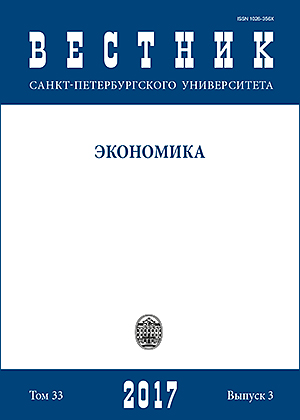Sphere of culture as object of study economic science
DOI:
https://doi.org/10.21638/11701/spbu05.2017.304Abstract
This article is devoted to analysis of the history and development of the relatively new field of economic research — cultural economy in general and particularly the art market. Special attention is paid to disclosure of the functioning market relations in the sphere of culture and first of all to the specifics of the art works as commodities, the nature of their use-value and price. The authors show that the products of cultural sphere have special social importance, as well as special social function, and therefore there is a contradiction between economic and social nature of cultural goods. The resolution of this contradiction is one of the issues of the governmental policy in the cultural field with a view to the process of commodification, which increases as well as the penetration of commodity relations in the cultural sphere, but could not reach the absolute level. Refs 40.
Keywords:
economy of culture, market of products of culture, welfare of culture as commodity, use value of products of culture, factors of pricing products of culture
Downloads
References
References in Latin Alphabet
Translation of references in Russian into English
Downloads
Published
How to Cite
Issue
Section
License
Articles of the St Petersburg University Journal of Economic Studies are open access distributed under the terms of the License Agreement with Saint Petersburg State University, which permits to the authors unrestricted distribution and self-archiving free of charge.






